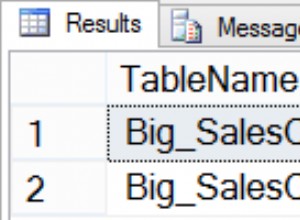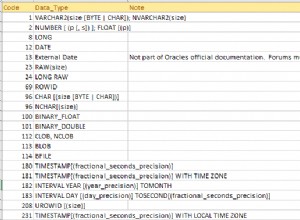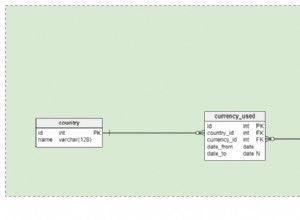L'output desiderato non è esattamente chiaro, ma puoi utilizzare sia il UNPIVOT e PIVOT funzione per ottenere il risultato
Se conosci il numero di colonne, puoi codificare i valori:
select *
from
(
select id,
'Instance'+cast(instance as varchar(10))+'_'+col col,
value
from
(
select id,
Instance,
Name,
cast(Size as varchar(50)) Size,
Tech
from yourtable
) x
unpivot
(
value
for col in (Name, Size, Tech)
) u
) x1
pivot
(
max(value)
for col in
([Instance0_Name], [Instance0_Size], [Instance0_Tech],
[Instance1_Name], [Instance1_Size], [Instance1_Tech],
[Instance2_Name], [Instance2_Size], [Instance2_Tech],
[Instance3_Name], [Instance3_Size], [Instance3_Tech])
) p
Vedi SQL Fiddle con demo
Quindi, se hai un numero sconosciuto di valori, puoi utilizzare sql dinamico:
DECLARE @query AS NVARCHAR(MAX),
@colsPivot as NVARCHAR(MAX)
select @colsPivot = STUFF((SELECT ','
+ quotename('Instance'+ cast(instance as varchar(10))+'_'+c.name)
from yourtable t
cross apply sys.columns as C
where C.object_id = object_id('yourtable') and
C.name not in ('id', 'instance')
group by t.instance, c.name
order by t.instance
FOR XML PATH(''), TYPE
).value('.', 'NVARCHAR(MAX)')
,1,1,'')
set @query
= 'select *
from
(
select id,
''Instance''+cast(instance as varchar(10))+''_''+col col,
value
from
(
select id,
Instance,
Name,
cast(Size as varchar(50)) Size,
Tech
from yourtable
) x
unpivot
(
value
for col in (Name, Size, Tech)
) u
) x1
pivot
(
max(value)
for col in ('+ @colspivot +')
) p'
exec(@query)
Vedi SQL Fiddle con demo
Se il risultato non è corretto, modifica il tuo OP e pubblica il risultato che ti aspetti da entrambi gli ID che hai fornito.




